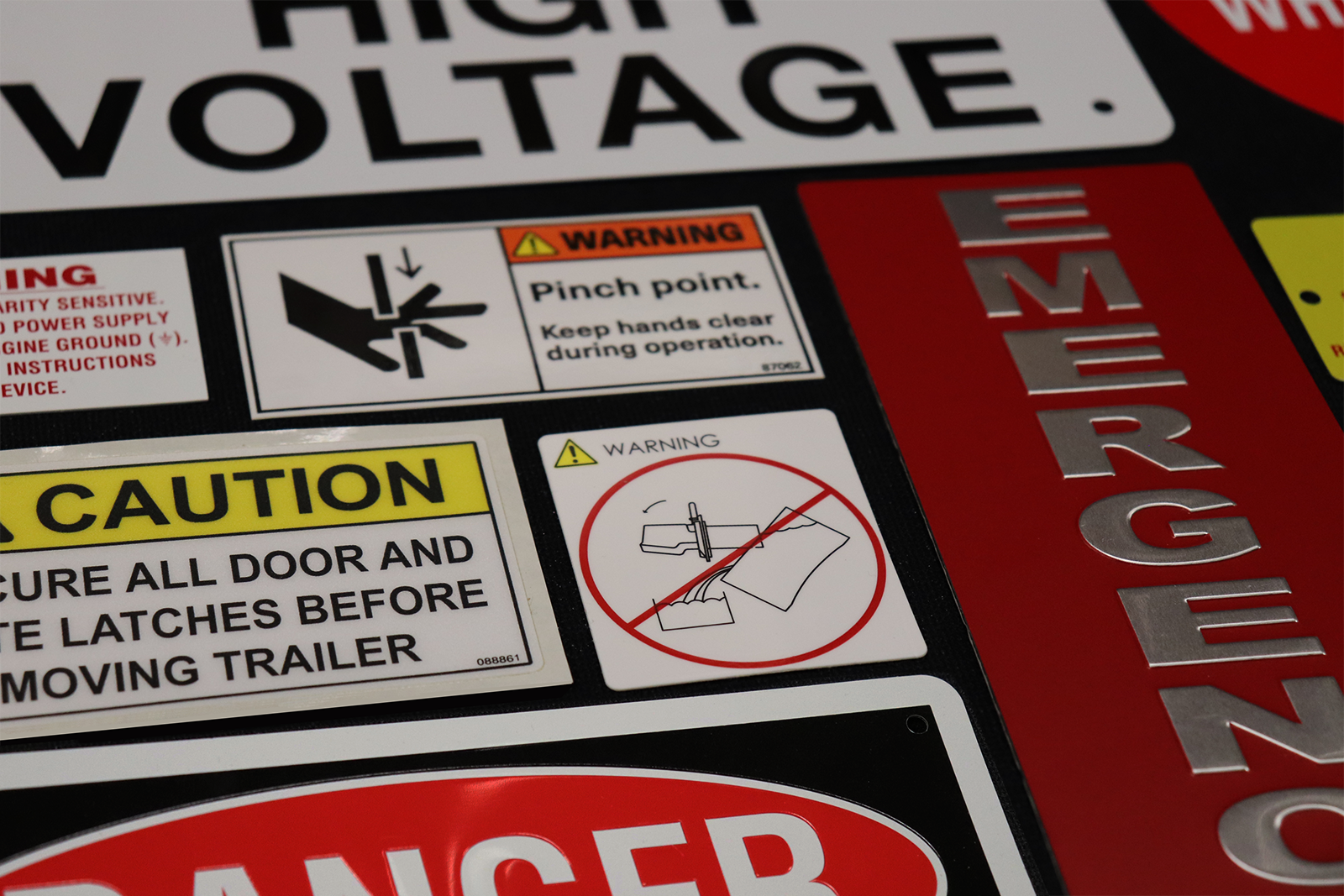In today's fast-paced industrial environments, visual communication is more than a safety feature - it's a strategic way to deliver essential operational data that teams can instantly understand and use to make smart decisions. By applying nameplates, data plates, and labels, you not only highlight hazards but also guide teams with clear, critical insights.
Cut Through Communication Noise
In noisy or multilingual settings, spoken instructions and training manuals often fail. Visual cues - like pictograms, color-coded labels, and data plates - display essential information in plain sight. Whether it's identifying a machine's status, where it's safe to work, stand, and walk, or highlighting a rule or protocol change, visual tools minimize confusion and misinterpretation.
For more information on multiple language labels, read our blog 'Multiple Language Warning Labels Supplied as a Kit'
Enable Instant Decision Making
Organizations embracing a visual management system enable their teams to "see" performance and deviations immediately. Visual systems, like a data plate on a machine and a backlit or dead front dial - empower workers to act efficiently and help maintain lean, error-resistant operations.
If you'd like more information on safety labels, download our free eBook! Click here.
Make Goals and Performance Visible
Displaying key details like hazard warning, voltage specs, and load limits on machines and in work areas help turn vague goals into clear, easy-to-read targets you can measure and act on. Workers are then able to adjust behaviors to improve results. This shared visibility keeps all shifts aligned, boosting motivation, accountability, and collective ownership.
Build Error-Proof Systems
The best visual systems help prevent mistakes before they happen. Color-coded signage creates safe routes, clear labels show critical specs, and data plates indicate maintenance schedules - making it harder to miss essential information.
Improve Training and Retention
Studies show "individuals remember 80% of what they see in a visual format after 3 days, compared to just 20% of what they read in text."* By incorporating data plates and standardized icons at workstations, new hires are able to quickly grasp operating procedures and quality standards, reducing the learning curve and minimizing errors. *(10 Neuroscience-Based Statistics that Prove Visual SOPs are More Effective than Written Procedures)
Making It Actionable
-
- Design: Create bold visual plates that combine symbols, numbers, colors, and QR codes linking to more information.
For more information on variable data, read this blog! - Deploy: Position visuals at control panels, workstations, and key transit points.
- Maintain: Regularly check readability and relevance - outdated visuals don't work.
- Measure: Track reductions in errors, time spent finding information, and onboarding efficiency.
- Design: Create bold visual plates that combine symbols, numbers, colors, and QR codes linking to more information.
Conclusion
Adopting visual communication with a focus on critical information transforms your operation. You're not just preventing accidents - you're delivering clear, instant visuals that drive smart decisions, leaner processes, and stronger performance. It fosters a more informed agile, and accountable workplace - where the right information is always right in front of you.


